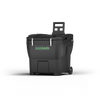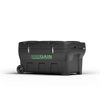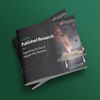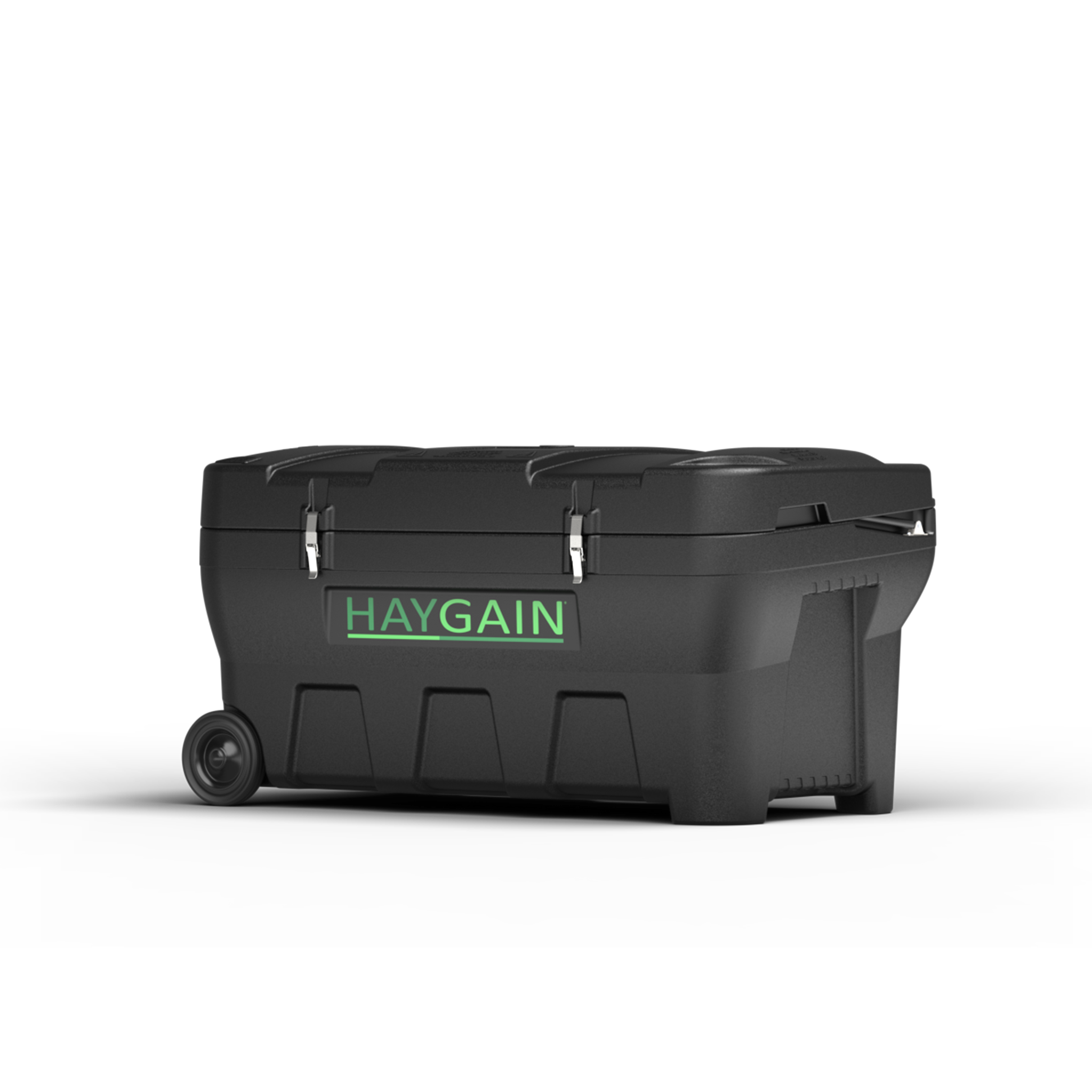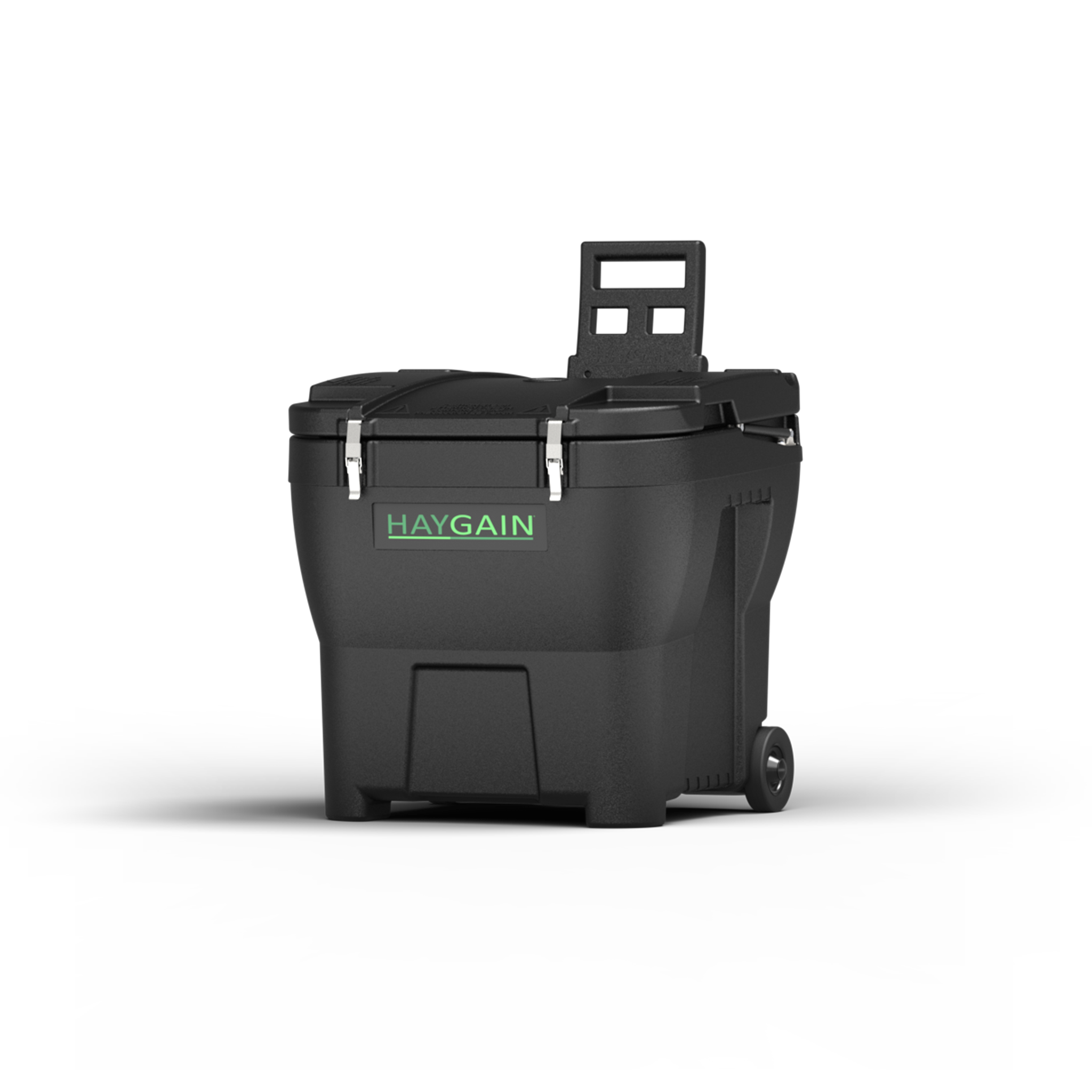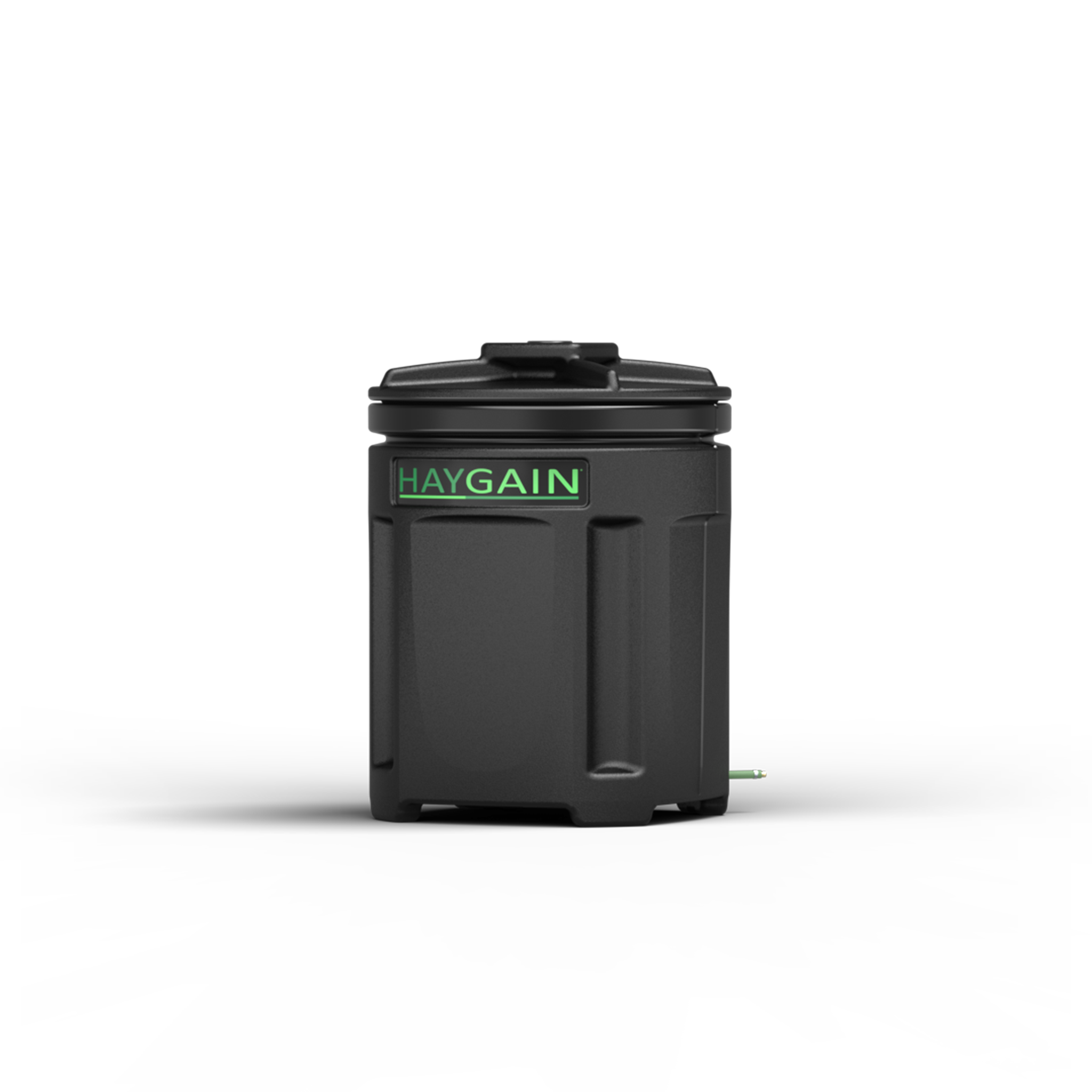It is no secret that obesity is a growing problem and is regarded as the most serious welfare issue currently affecting our global horse population.
Various studies in the UK 1,2 have monitored obesity in leisure and performance horse populations. The incidence is frighteningly high with 50-80% of horses classed as obese, which equates to over half a million fat horses in the UK!2,3,4,5
We all know that excess weight makes work and exercise more difficult, but it is the hidden damage that obesity causes that should really concern us.

Fat horses are more susceptible to 6,7
• insulin dysfunction (diabetes)
• chronic systemic inflammation
• laminitis
• pituitary pars intermedia dysfunction (Cushings disease)
• osteochondrosis (swollen/painful joints)
• hyperlipemia (fat pads)
• benign abdominal lipomas
• colic
• hypertension
• thermoregulation (difficulties cooling when exercising in summer)
• reduced reproductive performance
• increased management costs (vet, farrier and feed bills)
How & Why
This is a frightening list and one that is largely avoidable. So how have we got here and why is obesity frustratingly persistent?8,9
Inevitably there will be horses, just as in the human population, where obesity has a strong genetic / disease / gut microbiome factor that predisposes to weight gain. For these animals, it is not a matter of ‘happiness is, energy intake = energy output!’ For these horses weight management can be very challenging and extra care is needed in monitoring body condition and dietary intake, to keep them healthy. But it is possible, so take heart if you own one of these horses.
For the majority of horses it really is a matter of matching energy intake with energy expenditure.
When horses were used in war and as work animals, spending all day carrying armoured people, pulling carriages, herding cattle and working on the farm, energy expenditure was very high and diets were compiled to match the horses’ needs. This is when feeding cereals (mainly oats) became common place, energy expenditure could not be met by feeding grass or hay alone so they needed to have the more energy-dense feeds.
Accurate Assessments
In the 21st century it is important to recognise that our performance and leisure horses exercise for significantly shorter periods. Most simply don’t need to be fed high levels of energy dense feeds.
Some performance horses just don’t do well unless they are fed some cereals, but the majority of leisure horses do not require them. Alternatives should be sought if a ‘bucket feed’ is used as a horse:human bonding exercise.
Our feeding practices have also been influenced by over-zealous assessment of energy expenditure and the marketing of attractive compound feeds which have seduced us into believing that we are neglecting our duty of care if we don’t feed them.
This has made the pendulum swing to the excess side of ration formulation and the result is fat horses.
A recent study by Ebert and Moore-Colyer10 has shown that the commonly used ration formulation equation (NRC 2007) over-estimates energy requirements for exercise in performance horses by 111%. The Ebert study developed an easy to use equation (see Table 1 below) based on 60 Sports horses in UK and Switzerland using actual maintenance and work values when in their normal regimes. This demonstrated a significantly lower energy requirement for exercise (EEE) than previously thought.
Table 1. How to calculate energy requirements for your horse in megajoules (MJ) of digestible energy (DE) per day.

Using this system is a good starting point and a method of checking if you are under or over feeding. There are some minor adjustments that can be made, if necessary, for hyperactive horses or very ‘laid-back’ horses, but this is the most accurate method of assessing energy expenditure currently available.
Another factor that is often given as justification for a fat horse is body shape. Yes, cobs, cold bloods and heavy-weight hunter types are ‘stockier’ and heavier than a similar sized hot-blooded horse (Thoroughbred/Arabian), but this is no reason for them to be carrying excess body fat. The key is to be able to determine the difference between muscle and fat and to do this effectively you need to body condition score.

Body Condition Scoring
Figure 1 below details the areas commonly used to assess the amount of fat stored in these specific target body areas. The idea is to do a ‘laying on of hands.’ Palpate each area, see how easily you can feel the bone or muscle (feels slightly ridgey) underneath and give it a numerical score. The most common is a 1-10 scale with 1 being emaciated and 10 dangerously obese.
Worry less about the actual number you give an area because sometimes it is hard to differentiate between scores when the horse is in moderate to good condition. But take note if your 5 is still a 5 by your assessment, when you score the horse 2/3/4 weeks later. It is more important to monitor the changes than to be pin-point accurate with an actual score.

Figure 1 Areas commonly assessed when practicing body condition scoring
When we see our horses every day, we can miss subtle changes in body condition and before you realise it your horse has gained 50kg without you noticing. Giving your horse an objective score every week / 2 weeks will make you take notice of any changes and you can react accordingly before you have a problem on your hands.
Weight Management
Horses in the wild gain weight in the spring and summer months when the grass is plentiful, and lose weight in the winter when grazing is sparse. However, domesticated horses are stabled, and wear rugs so this seasonal fluctuation in body weight does not occur. Keeping a constant healthy body weight is perfect. If you let your horse gain too much weight in summer, it is highly likely that your regime will not allow the natural winter drop resulting in a steady annual weight gain.
As horses grow and mature, it is natural for them to gain weight. Training stimulates muscle growth and muscle is heavier than fat, so weight gain with training and age is expected. The important thing is to use body condition scoring (BCS) to differentiate between fat and muscle. Even if you have access to a weigh-bridge and know your horse is not gaining body weight, it might still be accumulating fat, particularly if it is not in active training.
BCS can be done by anyone. If the key areas which are known fat stores in laminitics -- such as crest, rump and shoulder areas -- are monitored carefully, many laminitis cases could be avoided.
If you own an obese horse you should contact a registered equine nutritionists and work out a suitable schedule for weight loss. It can be a long slow road and you will need support to do this. It is easy to be become emotionally blackmailed by your horse.
We think we train our horses, but in fact they are much better at training us! A neigh, kicking the door, hanging around by the gate / barn door, looking longingly at the hay can convince us that they NEED feeding.

Big Changes Needed
Small reductions in feed will do little to drop weight, the horse will just down-regulate their metabolic rate and no weight-loss will occur. More drastic measures are needed but it is important to ensure that protein and micronutrient requirements are met during the process. This is why a taylor-made weight-loss programme for your horse is best.
If your horses is just ‘carrying a bit extra’ then pay attention to the bucket feed your are offering. Cut this down, replace cereals with fibre feeds (but be aware that some fibre feeds are also high in energy), limit time at pasture, put a muzzle on your horse. Most importantly know your horse’s energy expenditure and feed to match that and not a gram more. Get your forage analysed so you know how much energy it contains, and if it is high quality then replace some of the hay (approx. 20% is fine) with straw so you dilute the energy content of the forage portion of the ration, but maintain chewing time.
If you horse is stabled, then you need to be aware of time budgets. Better to give 4/5 small nets per day to maintain trickle feeding rather than 2 big ones.
And finally, remember the old saying, a derivation from an essay by Hugh Latimer in 1555:
‘The eye of the keeper doth maketh the horse fat.’
Cited References
1. Carroll,C.L., Huntington, P.J. 1988 Body condition scoring and weight estimation of horses. Equine Veterinary Journal. 20; 41-45
2. Knowles, E., Grieve, L. 2020 Clinical insights: Equine obesity. Equine veterinary journal (10) 1111
3. British Equestrian Trade Association - BETA National Equestrian Survey 2019. Beta-uk.org
4. Furrado, T., McGowan,C., Perkins, E., Pinchbeck, G., Watkins, F., & Christley, R. (2018) How do owners perceive body condition and weight management of UK leisure horses? Equine Vet Journal 50 (52) 5-35
5. Furrado, T., Perkins, E., Pinchbeck, G., McGowan, C., Watkins, F., & Christley, R. (2021) Exploring horse owners' understanding of obese body condition and weight management in the UK leisure horse. Equine Vet Journal 53; 752-762
6. Johnson, P.J., Weidmeyer, C.E., Messer, N.T., Gangam, V.K. 2009 Medical implications of obesity in horses - lessons for human obesity. Journal of diabetes science and technology: from basic science to clinical practice. 3 (1) 163-174
7. Busechian, S., Turini, L., Sgorbini, M., Pieramati, C., Pisello, L., Orvieto, S., Rueca, F. Are horse owners able to estimate their animals' body condition score and cresty neck score? Vet. Sci. 2022 (9) 544
8. Daradics, Z., Crecan, C.M., Rus, M.A., Morar, I.A., Mircean,M.V., Catoi, A.F., Cecan, A.D., Catoi, C. 2021 Obesity-related metabolic dysfunction in dairy cows and horses: comparison to human metabolic syndrome. Life (11) 1406
9. Cerón, J.J., Contreras‑Aguilar, M.D., Escribano, D., Martínez‑Miró, S., López‑Martínez, M.J., Ortín‑Bustillo, A., Fernadez-Real, J.M. Genetic predispositions to low-grade inflammation and type-2 diabetes. Diabetes Technol Ther. 2006;8(1):55-66
10. Mark Ebert, Meriel J S Moore-Colyer (2020). The energy requirements of performance horses in training Translational Animal Science, Volume 4, Issue 2, April 2020, txaa032. https://doi.org/10.1093/tas/txaa032
